Don't wanna be here? Send us removal request.
Text
Laboratory Consumables Packaging Market Growth, Analysis and Trends
The laboratory consumables packaging market plays a crucial role in ensuring the integrity, safety, and sterility of laboratory supplies used in scientific research and experiments across various industries. This report summarizes the key trends, growth drivers, and future prospects of this vital segment.
Market on the Rise: Size and Growth Trajectory
The global laboratory consumables packaging market boasts a significant size, reaching an estimated value of USD 20.8 billion in 2023. Analysts predict steady growth, with the market projected to reach USD 32.1 billion by 2030, reflecting a healthy Compound Annual Growth Rate (CAGR) of approximately 7.2%.

Key Drivers of Growth:
Rising Demand for High-Quality Lab Supplies: The increasing emphasis on maintaining strict quality standards in research and testing processes necessitates secure and reliable packaging solutions for laboratory consumables.
Advancements in Biotechnology and Pharmaceuticals: The burgeoning life sciences sector is driving the need for specialized packaging solutions for sensitive biological samples and reagents.
Focus on Maintaining Sterility and Quality: Strict regulations and growing awareness of biocontamination risks are fueling the demand for sterile and tamper-evident packaging solutions.
Expanding Global Research Activity: The rise in research and development (R&D) activities across various industries, including pharmaceuticals, biotechnology, and academia, is increasing the demand for laboratory consumables and their packaging.
Market Segmentation and Trends:
Packaging Type: Plastic packaging remains dominant, but a growing focus on sustainability is driving the adoption of eco-friendly alternatives like bioplastics and glass.
Application: The market is segmented by application across various sectors, including healthcare, pharmaceuticals, biotechnology, and environmental testing.
Sustainability Concerns: The industry is increasingly prioritizing sustainable practices, with a focus on recyclable materials, reduced waste generation, and energy-efficient production processes.
Regional Landscape:
North America Maintains Lead: North America currently holds the largest market share due to a well-developed research infrastructure, stringent regulatory frameworks, and a strong presence of major pharmaceutical and biotechnology companies.
Asia Pacific Emerges as a Growth Engine: The Asia Pacific region is expected to witness the fastest growth due to rising government investments in R&D, expanding life sciences industries, and increasing environmental testing activities.
Key Players: Established players like Thermo Fisher Scientific, Schott AG, DW Healthcare Products, and DuPont de Nemours dominate the market, with innovative startups also emerging in the sustainable packaging segment.
A Secure and Sustainable Future:
The laboratory consumables packaging market is poised for continued growth, driven by the rising demand for high-quality lab supplies, advancements in life sciences research, and growing concerns about biosecurity and sustainability. As the industry evolves, a focus on innovative packaging solutions with enhanced security features, eco-friendly materials, and efficient production practices will be key to future success. This market will play a vital role in ensuring the integrity and reliability of research data, ultimately contributing to scientific advancements across various disciplines.
0 notes
Text
Orthopedic Devices Market: Drivers, Challenges, and Opportunities
The global orthopedic devices market is on a trajectory of robust growth, anticipated to soar to a staggering USD 80.28 billion by 2030, with a healthy Compound Annual Growth Rate (CAGR) of 4.5%. This surge underscores the evolving healthcare landscape and societal trends influencing the industry. Let's delve deeper into the key drivers, challenges, and exciting opportunities shaping this dynamic market.
Key Market Drivers:
Several key drivers are fueling the growth of the orthopedic devices market:
Aging Population: The global population is aging, leading to an increased incidence of musculoskeletal conditions such as osteoarthritis and osteoporosis. This demographic trend is driving demand for orthopedic procedures and devices aimed at restoring mobility and improving quality of life for seniors.
Technological Advancements: Innovations in orthopedic technology, such as minimally invasive surgical techniques, 3D printing, and advanced biomaterials, are improving patient outcomes and expanding the range of treatment options available to orthopedic patients.
Rise in Sports-Related Injuries: The growing popularity of sports and fitness activities has led to an increase in sports-related injuries, including fractures, ligament tears, and cartilage damage. This trend is driving demand for orthopedic implants and devices designed to support athletes' recovery and rehabilitation.
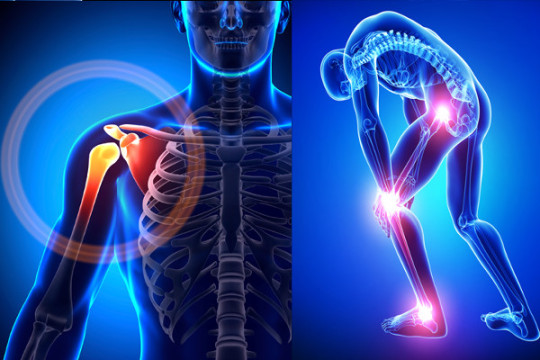
Challenges and Opportunities:
Despite the promising growth prospects, the orthopedic devices market faces several challenges:
High Cost of Treatment: Orthopedic procedures and devices can be expensive, limiting access to care for some patients, particularly in developing countries with limited healthcare resources.
Regulatory Hurdles: Stringent regulatory requirements can pose challenges for companies seeking to bring new orthopedic products to market, leading to delays in product launches and increased development costs.
Competition from Non-Invasive Treatments: Non-invasive treatments such as physical therapy, bracing, and medication present alternatives to surgery for some orthopedic conditions, posing a competitive threat to traditional orthopedic devices.
Despite these challenges, the orthopedic devices market presents significant opportunities for growth and innovation:
Emerging Markets: Developing countries with expanding healthcare infrastructure and rising disposable incomes represent untapped markets for orthopedic device manufacturers, offering opportunities for expansion and market penetration.
Personalized Medicine: Advances in personalized medicine, including 3D-printed implants and patient-specific treatment plans, have the potential to revolutionize orthopedic care by tailoring treatments to individual patient needs and preferences.
Technological Integration: The integration of technology into orthopedic devices, such as sensors and wearable devices for remote monitoring, presents opportunities to improve patient outcomes and enhance the efficiency of orthopedic care delivery.
Conclusion:
In conclusion, the orthopedic devices market is poised for significant growth in the coming years, driven by demographic trends, technological advancements, and the increasing prevalence of musculoskeletal conditions. While the market faces challenges such as high treatment costs and regulatory hurdles, there are ample opportunities for innovation and expansion, particularly in emerging markets and personalized medicine. By addressing these challenges and leveraging emerging opportunities, orthopedic device manufacturers can position themselves for success in this dynamic and rapidly evolving market landscape.
0 notes
Text
Insights into the Global Dental Equipment Industry
The dental equipment market shines brightly, offering a comprehensive array of tools and technologies that empower dental professionals to provide optimal oral healthcare. Projected to reach a staggering USD 23.8 billion by 2029, this market is witnessing robust growth fueled by advancements in technology, rising dental awareness, and an increasing global focus on preventative care. Let's delve into the latest statistics, explore the key trends shaping the industry, and examine the challenges and opportunities that lie ahead.
Market Size and Share: A Lucrative Smile
The global dental equipment market size is estimated to be around USD 19.2 billion in 2024. This impressive figure highlights the crucial role dental equipment plays in enabling dentists and hygienists to deliver high-quality care. While the market share of dental equipment within the overall healthcare industry varies depending on methodology, it's estimated to be between 2% and 3%. This share reflects the growing importance of advanced equipment in modern dentistry.
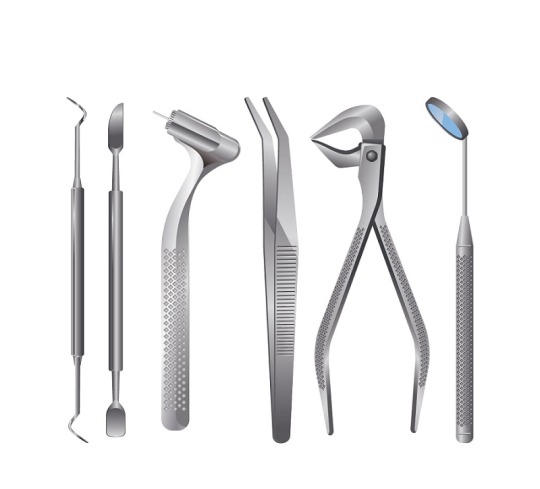
Regional Variations: A Global Market with Diverse Needs
The Asia Pacific region currently holds the largest market share in the dental equipment market, accounting for around 40% of the global market in 2021. This dominance is attributed to factors like a growing middle class with rising disposable income, increasing government investments in healthcare infrastructure, and a focus on improving oral health awareness. However, North America and Europe are also witnessing significant growth due to technological advancements and a focus on minimally invasive procedures.
Market Drivers: A Multifaceted Force for Growth
Several key factors are propelling the dental equipment market forward:
Technological Advancements: The constant development of innovative technologies is revolutionizing dentistry. Digital X-rays, computer-aided design and computer-aided manufacturing (CAD/CAM), and laser dentistry are driving efficiency, precision, and patient comfort during procedures.
Rising Dental Awareness: Public health campaigns and increased media attention on the importance of oral hygiene are leading to a growing demand for preventative and restorative dental care. This necessitates the use of advanced equipment for accurate diagnosis and treatment.
Growing Geriatric Population: The aging population globally signifies a growing need for specialized dental equipment catering to implant dentistry, periodontal treatments, and oral care solutions for denture wearers.
Increased Focus on Minimally Invasive Procedures: Minimally invasive procedures like laser dentistry and cone beam CT scans are gaining popularity due to their patient-centric approach, shorter recovery times, and improved treatment outcomes.
Market Trends: Embracing Innovation and Efficiency
The dental equipment market is brimming with exciting trends that shape how dentistry is practiced:
Artificial Intelligence (AI) Integration: AI-powered diagnostic tools and treatment planning software are emerging, offering improved accuracy and efficiency in dental care.
Cloud-Based Dentistry: The adoption of cloud-based solutions for dental imaging and patient data management is on the rise, promoting data security, remote collaboration, and improved workflow.
Teledentistry Gains Traction: Teledentistry platforms allow for remote consultations and patient monitoring, improving accessibility to dental care for geographically remote areas or those with limited mobility.
Focus on Patient Comfort: Manufacturers are prioritizing patient comfort by developing equipment with reduced noise levels, improved ergonomics, and features that minimize discomfort during procedures.
Challenges and Opportunities: Navigating the Evolving Landscape
Despite its rapid growth, the dental equipment market faces some key challenges:
High Cost of Equipment: Advanced dental equipment can be expensive, posing an investment hurdle for smaller dental practices. This creates a need for financing options and cost-effective solutions.
Cybersecurity Concerns: The increasing reliance on digital technology and patient data storage necessitates robust cybersecurity measures to protect sensitive information.
Need for Skilled Professionals: Advanced equipment requires skilled professionals to operate it effectively. Training and education initiatives are crucial to ensure a skilled workforce that can leverage new technologies.
The Future of Dental Equipment: A Brighter, More Connected Future
The dental equipment market presents a dynamic and exciting space for growth. By embracing technological advancements, focusing on affordability and accessibility, and prioritizing patient comfort and safety, dental equipment companies can ensure they continue to offer innovative solutions for a healthier and brighter smile for everyone. The future of dentistry promises to be a connected, technologically driven space, offering a more personalized and efficient dental care experience.
0 notes
Text
Transforming Healthcare: A Comprehensive Overview of the Medical Devices Market
In the dynamic landscape of healthcare, the Medical Devices Market plays a pivotal role, shaping the diagnosis, treatment, and management of various medical conditions. This comprehensive overview delves into the current state of the global market, highlighting key drivers, market segmentation, challenges, opportunities, and the noteworthy presence of medical devices companies in India.
Global Medical Devices Market: A Snapshot
The global Medical Devices Market is a vast and diverse sector encompassing a wide array of products, from diagnostic equipment to implantable devices. Valued at USD 456.9 billion in 2023, the market is projected to reach USD 686.1 billion by 2030, reflecting a substantial CAGR of 5.8% during the forecast period. This growth is attributed to technological advancements, increasing healthcare expenditures, and a growing aging population.
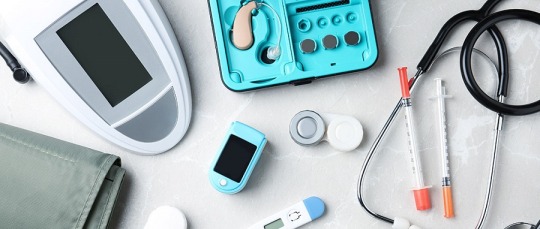
Key Drivers of Market Growth:
Technological Advancements: Continuous innovations, such as the integration of IoT, artificial intelligence, and robotics, are driving the development of advanced and smart medical devices.
Rising Chronic Diseases: The surge in the prevalence of chronic diseases, including cardiovascular disorders and diabetes, is fueling the demand for sophisticated medical devices for effective diagnosis and treatment.
Global Aging Population: With a significant portion of the global population entering old age, there is a heightened need for medical devices catering to age-related health issues.
Market Segmentation:
The Medical Devices Industry is segmented based on product types, applications, and end-users:
Diagnostic and Imaging Devices
Surgical Devices
Patient Monitoring Devices
In-Vitro Diagnostic Devices
Dental Devices
Orthopedic Devices
Cardiovascular Devices
Ophthalmic Devices
Challenges and Opportunities:
Challenges:
Regulatory Compliance: Stringent regulatory requirements pose challenges for market players, demanding adherence to rigorous approval processes.
Cost Constraints: High manufacturing and development costs can limit accessibility, particularly in regions with constrained healthcare budgets.
Opportunities:
Emerging Markets: Untapped markets in developing countries present opportunities for market expansion, driven by increased healthcare investments and infrastructure development.
Digital Health Integration: The integration of digital health technologies into medical devices offers opportunities for enhanced connectivity, remote monitoring, and personalized patient care.
Medical Devices Companies in India: A Rising Presence
India is emerging as a significant player in the global medical devices market, with several indigenous companies making notable contributions. Prominent Indian medical devices companies include:
Siemens Healthineers India
Wipro GE Healthcare
Philips India
Trivitron Healthcare
Stryker India
Hindustan Syringes & Medical Devices Ltd. (HMD)
These companies are actively engaged in the development, manufacturing, and distribution of a wide range of medical devices, contributing to the growth and innovation within the sector.
Future Outlook:
The Medical Devices Market is poised for continued growth and transformation, driven by ongoing technological advancements, the demand for personalized healthcare solutions, and the global focus on improving patient outcomes. As healthcare ecosystems evolve, medical devices will play an increasingly crucial role in shaping the future of healthcare delivery worldwide.
0 notes
Text
Power Players of the Aesthetic Laser Arena: Unveiling the Top 10 Companies
The aesthetic laser industry is experiencing a remarkable surge, fueled by a growing desire for minimally invasive and effective cosmetic solutions. As technology advances at a rapid pace and consumer awareness reaches new heights, several companies have emerged as frontrunners in developing and marketing innovative laser devices.
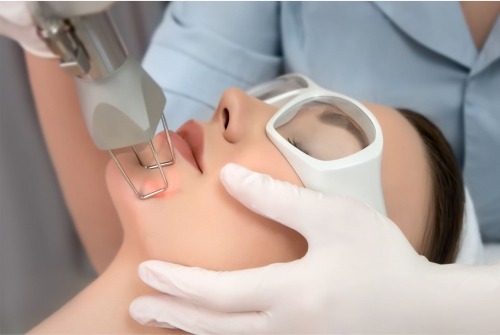
Here, we delve into the top 10 aesthetic laser companies shaping the Market:
1. Lumenis Ltd. (Israel): A global powerhouse in energy-based medical devices, Lumenis boasts a comprehensive portfolio of aesthetic lasers catering to diverse applications. Their flagship products include the LightSheer series, renowned for its effective and long-lasting hair removal capabilities, and the versatile M22 platform, offering solutions for skin resurfacing, vascular lesions, and more.
2. Syneron Candela (US): This prominent player stands out for its diverse range of aesthetic and medical lasers. Their popular offerings include the GentleMax Pro, a versatile platform widely used for hair removal, skin rejuvenation, and vascular treatments, and the CO2RE, a fractional CO2 laser offering advanced solutions for skin resurfacing and scar treatment.
3. Alma Lasers Ltd. (Israel): Recognized for their commitment to innovation, Alma Lasers delivers a wide array of aesthetic and medical solutions. Some of their notable contributions to the industry include the Accent Prime, a multi-platform system for body contouring, skin tightening, and cellulite reduction, and the versatile Harmony XL Pro platform with various laser wavelengths capable of addressing diverse needs.
4. Cynosure LLC (US): A leading force in the development of laser and light-based technologies, Cynosure focuses on innovative solutions for hair removal, body sculpting, and skin rejuvenation. Their key products include the Picoway, a picosecond laser revolutionizing tattoo removal, pigmented lesion treatment, and acne scar therapy, and the SculpSure, a non-invasive laser technology gaining traction for body fat reduction and body contouring.
5. Fotona d.d. (Slovenia): Renowned for their high-performance lasers, Fotona caters to a broad spectrum of medical and aesthetic applications. Their leading products include the Spectra series, offering advanced laser solutions for skin rejuvenation, vascular lesions, and scar treatment, and the Timewalker series of fractional lasers for effective skin resurfacing and wrinkle reduction.
6. Astanza Laser (US): Primarily focused on the tattoo removal market, Astanza Laser has carved a niche for itself by providing high-quality laser systems and comprehensive training programs. Their flagship product, the Astanza Duality, is a dual wavelength laser offering effective and versatile tattoo removal for various ink colors, solidifying their position as a key player in this specific segment.
7. Sciton, Inc. (US): Known for their advanced laser and light technologies, Sciton offers solutions across dermatology, aesthetics, and ophthalmology. Their popular products include the HALO laser, a hybrid fractional laser gaining recognition for effective skin resurfacing and rejuvenation, and the BBL HERO, a broad-band light technology used to treat sun damage, vascular lesions, and acne.
8. InMode Ltd. (Israel): Focused on minimally invasive aesthetic procedures, InMode offers innovative radiofrequency and laser technologies. Their leading products include the Minimally Invasive Facial Aesthetic System (MIFAS), a combined radiofrequency and laser platform for facial rejuvenation, and the AccuTite, a minimally invasive device gaining traction for body contouring and fat reduction.
9. BTL Industries (Czech Republic): Offering a diverse range of aesthetic and medical devices, BTL Industries focuses on technologies like radiofrequency, ultrasound, and laser. Their notable products include the Exilis Ultra 360, a multi-modal platform for body contouring, skin tightening, and cellulite reduction, and the Emsella, a chair-based device offering a non-invasive option for treating urinary incontinence.
10. Lutronic Corp. (South Korea): A leading manufacturer of medical lasers and aesthetic devices, Lutronic offers solutions for various applications. Their prominent products include the Spectra XT series, offering advanced laser solutions for dermatology, aesthetics, and surgery, and the HELIOS II laser, a high-powered CO2 laser used for skin resurfacing, scar treatment, and other surgical applications.
These top 10 aesthetic laser companies not only represent a diverse range of players in the dynamic aesthetic laser market but also showcase the continuous development and innovation shaping the future of this industry. As they strive to offer patients increasingly safe, effective, and non-invasive solutions for achieving their desired aesthetic outcomes, the aesthetic laser market is poised for continued growth and evolution.
0 notes
Text
Unlocking Growth: Navigating the Bone Growth Stimulators Market
Market Overview: The Bone Growth Stimulators market, a pivotal player in the orthopedic care landscape, is gaining substantial traction. With a market size of USD 1,229 million in 2022, the industry is poised for remarkable growth, projected to reach USD 3,702 million by 2032, exhibiting a robust CAGR of 12.4% during 2023-2032.
Market Dynamics:
Drivers:
Rising Orthopedic Disorders: The global surge in musculoskeletal issues, accentuated by an aging population, is propelling the demand for innovative bone growth stimulators.
Sports Injuries and Accidents: Increased awareness of bone health, coupled with a rise in sports-related injuries and accidents, contributes significantly to the adoption of bone growth stimulation therapies.
Restraints:
Reimbursement Challenges: Certain regions grapple with reimbursement issues, limiting accessibility to advanced bone growth stimulators.
Regulatory Hurdles: Stringent regulatory processes for device approvals pose challenges, potentially hindering market growth.
Opportunities:
Global Healthcare Infrastructure Expansion: Emerging economies present untapped markets as healthcare infrastructure expands globally.
Portable, User-Friendly Devices: The development of portable, user-friendly devices taps into the needs of a health-conscious, mobile society.
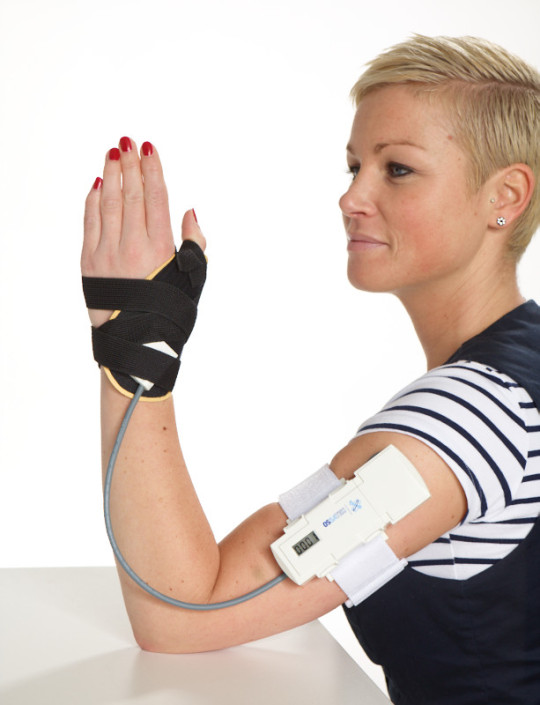
Regional Landscape:
North America:
Market Leader: North America spearheads the Bone Growth Stimulators market, boasting advanced healthcare facilities and a strong presence of key players.
Europe:
Geriatric Population Boost: Europe follows suit, driven by a burgeoning geriatric population and a growing demand for orthopedic solutions.
Asia-Pacific:
Emerging Growth Hub: Asia-Pacific, especially in countries like China and India, showcases promising growth, fueled by rising healthcare investments.
Competitive Landscape:
Orthofix:
Focus: Renowned for spinal disorder and trauma solutions.
Market Position: A key player with a wide range of bone growth stimulators.
Medtronic:
Global Giant: Medtronic stands as a global giant in healthcare technology.
Innovation: Known for innovative bone growth stimulators with a comprehensive product line.
Zimmer Biomet:
Commitment to Excellence: Zimmer Biomet is recognized for providing state-of-the-art musculoskeletal solutions.
Product Range: Offers both invasive and non-invasive options.
DJO Global:
Acquisition: Now part of Colfax Corporation, DJO Global offers bone growth stimulators under the brand name Empi.
Outcome Focus: Strong market presence with a focus on enhancing patient outcomes.
Market Trends:
Non-Invasive Solutions:
Technology Adoption: Growing emphasis on non-invasive solutions, such as low-intensity pulsed ultrasound (LIPUS) and capacitive coupling (CC) technologies.
Outpatient and Home-Based Treatments:
Consumer-Centric Shift: Escalating healthcare costs drive a shift towards outpatient and home-based treatments, expanding the consumer base.
Collaborations and Innovations:
Product Portfolio Expansion: Major players like Orthofix, Medtronic, Zimmer Biomet, and DJO Global continually innovate and expand their product portfolios.
Collaborative Endeavors: Collaborations with healthcare institutions and research organizations drive product development.
Future Growth Prospects: The Bone Growth Stimulators market's future appears promising. Advancements in technology will likely yield more efficient and cost-effective solutions. The market's growth will also be fueled by the increasing demand for non-invasive therapies, aligning with patient comfort and convenience.
In conclusion, the Bone Growth Stimulators market is not only a beacon of progress in orthopedic care but also a dynamic arena fostering innovation and patient-centric solutions amid the evolving healthcare landscape.
0 notes
Text
Orthopedic Devices Market Size And Share Report, 2030
The global orthopedic devices market is poised for substantial growth, underpinned by an array of market dynamics that shape its trajectory. With a market size of USD 58.94 billion in 2023, the sector is anticipated to witness a robust CAGR of 4.5%, reaching USD 80.28 billion by 2030.
Market Dynamics:
Growth Drivers: The market is buoyed by several factors, including the escalating global aging population, a surge in orthopedic surgeries, and continual advancements in treatment modalities. The increased prevalence of bone cancer and musculoskeletal conditions, coupled with groundbreaking technological innovations like patient-specific implants and minimally invasive procedures, contribute significantly to market expansion.
Challenges: Despite the optimistic growth outlook, the industry faces challenges such as product recalls arising from defective devices, stringent regulatory hurdles, and the persistent issue of high associated costs. Mitigating these challenges demands stringent quality control measures and a streamlined regulatory landscape to foster innovation.
Opportunities: Opportunities abound in the market, with a growing awareness of musculoskeletal disorders and the adoption of minimally invasive surgical techniques. Emerging economies, particularly in the Asia Pacific region, present untapped potential due to increased healthcare investments, a burgeoning patient population, and a rise in medical tourism.
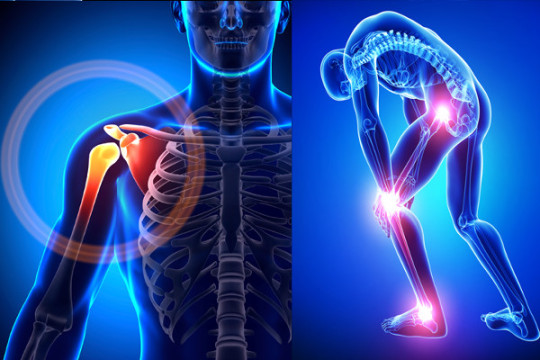
Market Segmentation:
Product Segments: The joint reconstruction and spinal devices segments continue to dominate the market, fueled by the increasing demand for orthopedic implants and surgical interventions. Innovative solutions such as 3D-printed implants, robotics-assisted surgeries, and personalized orthopedic treatments are gaining traction, propelling growth in these segments.
End-users: Hospitals and orthopedic clinics emerge as the primary end-users, capturing the majority of revenue share. The availability of advanced healthcare infrastructure, coupled with favorable reimbursement policies, positions hospitals as key stakeholders in the orthopedic devices market.
Regional Insights:
North America: As a market leader, North America boasts a mature healthcare infrastructure, high disposable income, and an escalating incidence of orthopedic disorders. The U.S. orthopedic devices market is projected to surpass USD 20.26 billion by 2033, driven by continuous advancements in treatment options and the growing demand for orthopedic surgeries.
Asia Pacific: This region emerges as the fastest-growing market, fueled by increasing healthcare investments, growing awareness of treatment options, and a rapidly aging population. Countries like India and China offer significant growth opportunities due to a large elderly population pool, a surge in medical tourism, and an increasing preference for advanced healthcare solutions.
Market Insights:
Technological Advancements: The orthopedic devices market is witnessing transformative technological advancements, including 3D printing, robotics, and smart implants. These innovations enhance precision, reduce recovery times, and contribute to overall improved patient outcomes.
Value-Based Care: There is a noticeable shift towards value-based care, emphasizing cost-effective solutions and technologies that demonstrate superior clinical outcomes. This trend aligns with the global push for more efficient and patient-centric healthcare services.
Emerging Markets: Beyond the traditional powerhouses, emerging markets like Brazil, India, and China are becoming major players. Increased healthcare infrastructure investments, growing disposable income, and rising geriatric populations contribute to the burgeoning demand for orthopedic devices.
Digitalization: The integration of artificial intelligence, machine learning, and big data analytics is revolutionizing the market. These technologies optimize treatment planning, transform surgical procedures, and enhance overall patient care.
Conclusion:
The orthopedic devices market not only presents significant growth prospects but is also at the forefront of transformative changes in healthcare. As the industry addresses challenges and seizes opportunities, leveraging innovation, adapting to evolving patient needs, and fostering collaborations within the sector will be paramount for sustained and impactful growth. The orthopedic devices market is poised to play a pivotal role in enhancing patient outcomes and reshaping the future landscape of orthopedic care on a global scale.
0 notes
Text
Biopsy Devices Market Size, Share, Growth, Trends 2028
The Biopsy Devices Market is a critical component of modern healthcare, serving as an essential diagnostic tool in the detection and analysis of various medical conditions, particularly cancer. As of 2023, the market is valued at USD 2.8 billion, with projections indicating a robust Compound Annual Growth Rate (CAGR) of 7.9%, aiming to reach USD 4.5 billion by 2028. This upward trajectory is attributed to several factors, including the escalating incidence of cancer, technological advancements in biopsy methodologies, and the increasing adoption of minimally invasive diagnostic procedures.
Market Landscape and Dynamics: The Biopsy Devices Market operates at the intersection of technology, innovation, and patient care. With a current valuation of USD 2.8 billion, the market is witnessing a surge in demand driven by the rising prevalence of cancer and an imperative for early and accurate diagnoses. Biopsy devices play a pivotal role in obtaining tissue samples for analysis, guiding treatment decisions, and monitoring disease progression.
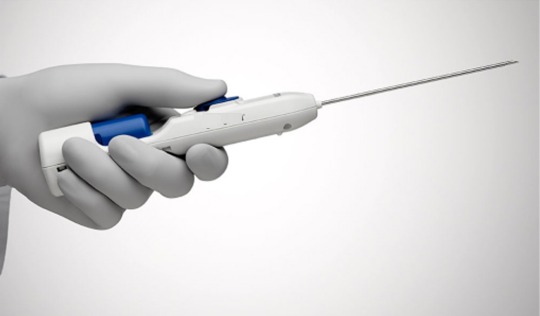
Market Insights and Projections: The market's growth is underpinned by a range of insights and projections. The escalating global cancer burden, advancements in imaging technologies, and a growing emphasis on early detection are pivotal factors propelling the market forward. As per the current trajectory, the market is poised to achieve a CAGR of 7.9%, reaching a valuation of USD 4.5 billion by 2028. These insights underscore the increasing reliance on biopsy devices in contemporary medical practices.
Key Trends Shaping the Biopsy Devices Market:
Minimally Invasive Procedures Surge: One of the prominent trends is the escalating preference for minimally invasive biopsy procedures. Techniques such as ultrasound-guided, stereotactic, and endoscopic biopsies are gaining traction due to their associated benefits, including reduced complications, faster recovery, and improved patient outcomes.
Robotic Biopsy Systems on the Rise: The market is witnessing a surge in the adoption of robotic-assisted biopsy systems. These systems offer increased precision, accuracy, and efficiency during biopsy procedures, leading to more precise tissue sampling and improved diagnostic accuracy.
Liquid Biopsies Gain Ground: Liquid biopsy techniques, involving the analysis of blood or bodily fluids for cancer biomarkers, are gaining prominence. These non-invasive alternatives offer early detection possibilities, real-time treatment monitoring, and the identification of genetic mutations influencing therapy choices.
Artificial Intelligence Revolutionizes Diagnosis: The integration of Artificial Intelligence (AI) into biopsy devices is reshaping tissue analysis. AI-powered systems can rapidly and accurately analyze large volumes of imaging and histopathological data, aiding pathologists in identifying abnormal tissue patterns and making more informed diagnostic decisions.
Key Market Players: Several key players contribute to the growth and innovation within the Biopsy Devices Market. These industry leaders include:
Becton, Dickinson and Company: A renowned global medical technology company.
C. R. Bard, Inc.: Specializing in medical technologies for cancer diagnosis and treatment.
Cook Medical LLC: A leading player in the development and manufacturing of medical devices.
Medtronic plc: A multinational medical technology company focused on improving healthcare outcomes.
Hologic, Inc.: Known for innovative medical technologies primarily focused on women's health.
Boston Scientific Corporation: A global medical technology company advancing science for life.
Olympus Corporation: A key player in the development of innovative optical and digital solutions.
INRAD, Inc.: A medical device company specializing in minimally invasive solutions.
Argon Medical Devices, Inc.: A leader in the development and manufacturing of medical devices for interventional procedures.
Devicor Medical Products, Inc.: Focused on providing high-quality, innovative solutions for breast biopsy.
These companies are at the forefront of driving innovation, investing in research and development, and contributing significantly to the advancements in biopsy devices.
Future Prospects: The future of the Biopsy Devices Market is promising, marked by ongoing technological advancements, expanding applications of biopsy procedures, and increased investments in cancer diagnosis and treatment. Biopsy devices will continue to play a pivotal role in facilitating accurate diagnoses, guiding treatment decisions, and ultimately improving patient outcomes.
Conclusion: In conclusion, the Biopsy Devices Market is a dynamic and rapidly evolving sector with significant implications for healthcare. As technological innovations continue to shape the landscape, the market's trajectory promises advancements in accuracy, efficiency, and patient-centric care. Stakeholders, including manufacturers, healthcare providers, and investors, have the opportunity to contribute to the ongoing narrative of progress in cancer diagnosis through their engagement with the Biopsy Devices Market.
0 notes
Text
Aesthetic Laser Market Analysis and Key Insights
The aesthetic laser market pulsates with the rhythm of opportunity, projected to reach a radiant USD 8.2 billion by 2028, boasting a compelling CAGR of 14.1%. This dynamic landscape, fueled by technological advancements, shifting consumer preferences, and regional growth, invites exploration and strategic navigation. Let's embark on a journey to uncover the hidden gems within this market.
Beaming with Brilliance: Key Drivers
Experience the Non-invasive Touch: Consumers favor minimally invasive approaches, making lasers a perfect fit for hair removal, skin rejuvenation, and more.
Tech's Glowing Embrace: Advancements in picosecond lasers, fractional technologies, and AI-powered diagnostics unlock new possibilities, enhancing efficacy and safety.
The Social Media Spotlight: Influencers and celebrities shine a light on laser procedures, igniting demand among younger demographics.
Aging Gracefully, Laser-Enhanced: Growing populations prioritize appearance management, driving the adoption of anti-aging laser solutions.
Geographic Diversity: North America and Europe remain dominant, but Asia Pacific's rapid growth (17.5% CAGR) presents exciting potential.
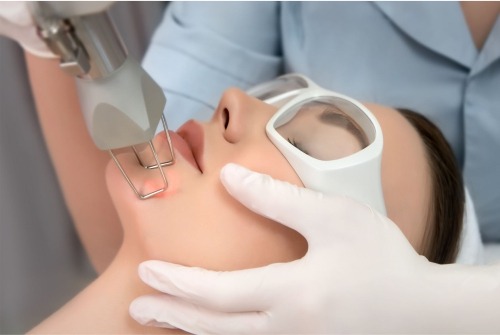
Navigating the Shadows: Challenges to Consider
A Crowded Competition: Standing out in a saturated market requires innovation and a clear differentiation strategy.
Regulatory Maze: Compliance with evolving regulations can be complex, demanding agility and expertise.
Cybersecurity Under the Microscope: Protecting patient data and device security is paramount in our connected world.
Balancing Affordability & Innovation: Offering value alongside advanced technology requires strategic pricing and cost-effectiveness.
Attracting the Stars: Securing and retaining top talent is crucial for innovation and market understanding.
Charting Your Path to Success:
Embrace Innovation: Be an early adopter of new technologies and applications to stay ahead of the curve and meet evolving customer demands.
Personalize Your Beam: Develop tailored treatment plans addressing individual needs and preferences, building customer loyalty.
Shine Online: Leverage social media, influencer marketing, and targeted campaigns to reach your audience effectively.
Prioritize Safety & Efficacy: Ensure regulatory compliance and invest in clinical research to build trust and showcase treatment effectiveness.
Forge Alliances: Collaborate with dermatologists, cosmetic surgeons, and medical spas to expand reach and leverage expertise.
Invest in Your Team: Attract and retain top talent through competitive compensation, a stimulating work environment, and professional development opportunities.
Beyond the Horizon: Embracing the Future
The aesthetic laser market offers a promising landscape for businesses ready to illuminate their path. By understanding the key trends, navigating the challenges, and implementing strategic actions, you can position yourself for growth in this dynamic market. Remember, the key is to radiate innovation, build trust with your audience, and navigate the complexities with agility. Together, let's rewrite the future of the aesthetic laser market, one successful step at a time.
0 notes
Text
Medical Devices Market Analysis and Size
In today's rapidly evolving healthcare landscape, the Medical Devices Market stands as a beacon of innovation and progress. With a market size projected to soar from USD 423.1 billion in 2023 to a staggering USD 605.3 billion by 2028, the industry is witnessing unprecedented growth and transformation. Let's delve deeper into the key drivers, market segments, regional dynamics, and actionable insights shaping the future of medical devices.
Key Drivers Fueling Growth
Several factors are driving the exponential growth of the Medical Devices Market. The aging global population, coupled with rising healthcare expenditure, underscores the increasing demand for innovative medical solutions. Technological advancements, including artificial intelligence, robotics, and minimally invasive surgery techniques, are revolutionizing patient care and treatment outcomes. Moreover, the prevalence of chronic diseases necessitates the development of advanced medical devices for effective diagnosis and management.
Diverse Market Segments and Growth Trajectories
The Medical Devices Market encompasses a myriad of segments, each playing a crucial role in addressing diverse healthcare needs. In Vitro Diagnostics (IVD), Medical Imaging, Cardiovascular Devices, and Orthopedics emerge as the largest segments, collectively dominating the market landscape. However, it is the fastest-growing segments such as Wearable Medical Devices, Telemedicine & Remote Patient Monitoring, and AI-powered Diagnostics & Therapeutics that hold immense potential for transformative impact.
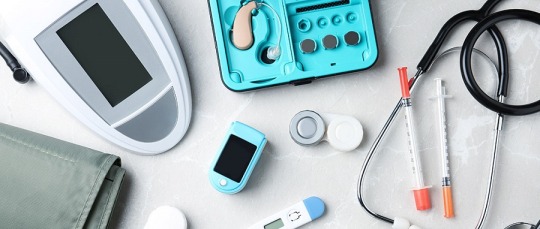
Regional Dynamics and Market Leadership
Regionally, North America emerges as the undisputed leader, commanding a substantial 40% market share, followed closely by Europe and Asia Pacific. These regions serve as epicenters of innovation and technological advancements, driving market growth and adoption. However, emerging markets in Asia Pacific and Latin America present lucrative opportunities for expansion, owing to favorable demographics and increasing healthcare investments.
Actionable Insights for Market Players
In light of these trends and insights, market players must strategize and innovate to stay ahead in this dynamic landscape:
Invest in Innovation: Embrace cutting-edge technologies such as AI-powered devices and personalized medicine to meet evolving healthcare needs effectively.
Embrace Digital Health: Integrate telemedicine, remote monitoring, and data analytics into medical solutions to enhance patient care and accessibility.
Target Emerging Markets: Explore high-growth markets in Asia Pacific and Latin America, leveraging untapped opportunities for expansion and market penetration.
Prioritize Data Security: Address concerns surrounding data protection and privacy, ensuring robust cybersecurity measures for connected devices and platforms.
Focus on Value-Based Care: Develop solutions that demonstrate tangible improvements in patient outcomes and cost-effectiveness, aligning with the shift towards value-based care models.
Collaborate with Stakeholders: Forge strategic partnerships with healthcare providers, payers, and research institutions to foster innovation, drive market adoption, and address unmet medical needs.
In conclusion, the Medical Devices Market is poised for unprecedented growth and innovation, driven by technological advancements and shifting healthcare paradigms. By embracing innovation, leveraging digital health solutions, and targeting emerging markets, market players can navigate the evolving landscape and usher in a new era of transformative healthcare delivery.
0 notes
Text
Dental Equipment Market- Size and Revenue
From sparkling tools to innovative imaging technology, dental equipment plays a crucial role in maintaining oral health and crafting confident smiles. The global dental equipment market, valued at a staggering USD 6.13 billion in 2021, is projected to reach USD 8.7 billion by 2027, fueled by rising demand, technological advancements, and a growing focus on oral healthcare. Let's embark on a journey through this ever-evolving market, exploring its size, key players, and exciting trends:
Market Segments: Catering to Diverse Needs
The dental equipment market encompasses a wide range of segments:
Dental chairs and units: The cornerstone of any dental practice, offering comfort and functionality for both dentists and patients.
Imaging equipment: X-rays, CT scanners, and intraoral cameras aid in diagnosis and treatment planning.
Handheld instruments: Rotary instruments, scalers, and probes for performing various procedures.
Sterilization equipment: Ensures hygiene and safety within the dental practice.
Dental laboratory equipment: Used for fabricating crowns, bridges, and other prosthetics.
Emerging technologies: CAD/CAM systems, digital scanners, and 3D printing revolutionize treatment options.

Top Dental Equipment Manufacturers: Shaping the Industry
Several leading companies drive innovation and growth in this market:
Dentsply Sirona: Global leader in dental equipment and consumables, offering a comprehensive product portfolio.
Align Technology: Pioneering manufacturer of Invisalign clear aligners and associated digital technologies.
Envista Holdings: Leading provider of dental implants, surgical tools, and digital solutions.
Planmeca: Finnish company renowned for its innovative imaging and CAD/CAM technologies.
Carestream Dental: Leading provider of dental imaging solutions, including digital X-rays and cone beam CT scanners.
Market Drivers: Fueling Growth in the Dental Equipment Landscape
Several factors contribute to the market's expansion:
Rising disposable income: Increased spending on oral healthcare, especially in emerging markets.
Growing awareness of oral health: Emphasis on preventive care and aesthetic dentistry.
Aging population: Higher demand for dental services due to age-related oral health issues.
Technological advancements: Improved accuracy, efficiency, and patient comfort with new equipment.
Digitalization: Integration of digital technologies like CAD/CAM and 3D printing for more efficient workflows.
Sustainability and Innovation: Shaping the Future of Dental Equipment
The market is witnessing exciting trends aimed at sustainability and patient experience:
Eco-friendly equipment: Manufacturers focusing on energy-efficient and recyclable materials.
Teledentistry: Utilizing technology to provide remote consultations and patient monitoring.
Artificial intelligence: AI-powered solutions for diagnostics, treatment planning, and personalized care.
Affordable treatment options: Development of lower-cost equipment and technologies to increase accessibility.
Conclusion: Beyond Shiny Equipment: A Market Focused on Wellness
The dental equipment market transcends the tools themselves. It reflects a growing emphasis on oral health, technological advancements, and improving patient experiences. As innovative solutions emerge and sustainability gains traction, this dynamic market continues to evolve, ensuring healthier smiles for all.
0 notes
Text
Supporting the Body: Exploring the Dynamic Orthopedic Devices Market
From mending fractures to replacing worn-out joints, orthopedic devices play a crucial role in restoring mobility and improving quality of life for millions worldwide. This multi-billion dollar market is experiencing exciting advancements, driven by an aging population, technological innovations, and a focus on minimally invasive procedures. Let's delve into the diverse segments of the Orthopedic Devices Market and explore their future potential:
Orthopedic Implants Market: Anchoring Growth
The Orthopedic Implants Market, valued at over USD 37 billion in 2023, forms the largest segment, encompassing:
Joint replacements: Hip, knee, and shoulder replacements are the most common, with advancements in materials and surgical techniques leading to longer lifespans and improved outcomes.
Trauma fixation devices: Plates, screws, and nails help stabilize fractures, with minimally invasive techniques gaining popularity.
Dental implants: Offering a natural-looking and functional alternative to missing teeth.
Orthopedic Consumables Market: Fueling Procedures
Supporting surgery and treatment, this market includes:
Bone cements: Holding implants in place, with advancements in biocompatibility and strength.
Surgical instruments: Specialized tools for precise and efficient surgeries.
Sutures and closure devices: Minimizing tissue damage and promoting healing.
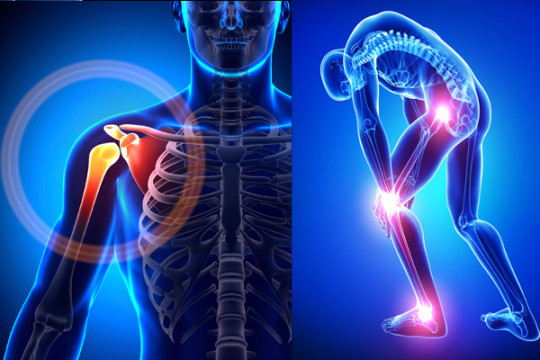
Orthopedic Prosthetics Market: Walking Again
For those with limb loss, prosthetics offer mobility and independence. This segment is driven by:
Advanced prosthetics: Microprocessor-controlled prosthetics mimic natural movement and improve functionality.
Lightweight materials: Enhancing comfort and ease of use.
Custom-designed prosthetics: Tailored to individual needs and lifestyles.
Orthopedic Trauma Devices Market: Mending Broken Bones
Addressing fractures and injuries, this market includes:
External fixators: Stabilize complex fractures without surgery.
Intramedullary nails: Provide internal support for long bone fractures.
Arthroscopic devices: Used for minimally invasive joint repair.
Orthopedic Braces and Supports Market: Providing Support
Supporting joints, muscles, and ligaments, this segment includes:
Knee braces: Offer stability and pain relief for various conditions.
Back braces: Support posture and alleviate back pain.
Ankle and wrist braces: Provide support and protection after injuries.
Key Drivers of Growth: A Future in Motion
Several factors are fueling the Orthopedic Devices Market:
Aging population: Increased demand for joint replacements and fracture repair due to longer lifespans and active lifestyles.
Technological advancements: Minimally invasive procedures, personalized implants, and robotics offer improved outcomes and quicker recovery times.
Rising healthcare spending: Increased access to healthcare in developing countries.
Focus on sports medicine: Increasing participation in sports and active lifestyles leads to demand for sports-related injury treatment.
Emerging Trends: Shaping the Future
The market is witnessing exciting developments:
Bioprinting: Creating customized implants using patient cells.
Artificial intelligence: Used for surgical planning, personalized treatment recommendations, and rehabilitation.
Telehealth: Remote monitoring and consultations improve patient care and accessibility.
Focus on sustainability: Environmentally friendly materials and production processes.
Conclusion: A Market Supporting Movement and Well-being
The Orthopedic Devices Market plays a vital role in improving mobility and quality of life. With technological advancements, personalized solutions, and a focus on sustainability, this dynamic market is poised for continued growth, ensuring a future where everyone can move with confidence and comfort.
0 notes
Text
Radiant Beauty: Navigating the Aesthetic Lasers Market Dynamics
In the realm of beauty and aesthetics, the Aesthetic Lasers Market stands as a beacon of innovation, driving transformative changes in cosmetic procedures. With a focus on key aspects like market share, growth, revenue, and top companies, this exploration delves into the vibrant landscape of aesthetic lasers.
Aesthetic Lasers Market Share: A Tapestry of Innovation and Competition
The market share in the Aesthetic Lasers industry reflects a dynamic tapestry where innovation and competition intertwine. Key players vie for prominence, contributing to the evolution of cutting-edge technologies. Notable names such as Lumenis, Alma Lasers, and Cynosure illuminate this competitive landscape with their diverse offerings.
The Growth Trajectory: A Journey of Technological Advancements
The Aesthetic Lasers Market is on an upward trajectory, fueled by continuous technological advancements. From laser resurfacing to hair removal and the treatment of various skin irregularities, the market's growth is synonymous with the expanding array of procedures facilitated by aesthetic lasers. As consumer preferences evolve, the market adapts, presenting new opportunities for growth.
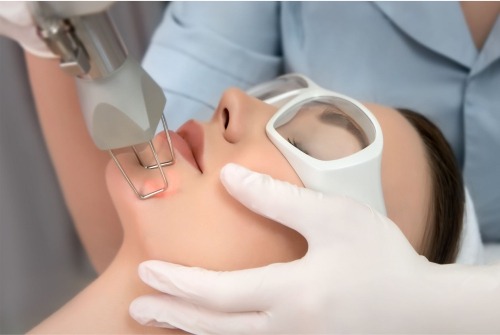
Revenue Prowess: A Lucrative Horizon for Aesthetic Lasers
The financial prowess of the Aesthetic Lasers Market is evident in its substantial revenue. The market's valuation, estimated at USD 2.96 billion in 2024, is projected to soar to a remarkable USD 4.59 billion by 2029. This impressive revenue growth is a testament to the increasing demand for aesthetic laser procedures globally.
Top Aesthetic Lasers Companies: Architects of Aesthetic Excellence
Leading the charge in shaping the Aesthetic Lasers Market, top companies play a pivotal role in defining the industry's landscape. Lumenis, Alma Lasers, and Cynosure, among others, serve as architects of aesthetic excellence, offering innovative solutions that cater to a spectrum of cosmetic procedures. Their contributions underscore the market's commitment to providing safe, effective, and advanced aesthetic solutions.
Navigating the Future: Trends Shaping Aesthetic Laser Procedures
The Aesthetic Lasers Market's future is intricately linked to emerging trends. From the dominance of the hair removal segment to North America's stronghold on the market, understanding these trends is crucial. The rising adoption of minimally invasive devices and the surge in aesthetic laser procedures contribute to North America's significant market share.
In conclusion, the Aesthetic Lasers Market unfolds as a dynamic realm where science, beauty, and innovation converge. As top companies drive advancements and revenue surges, the market continues to shape the future of aesthetic procedures. Whether it's the allure of laser resurfacing or the precision of hair removal, the Aesthetic Lasers Market remains a captivating journey of transformation and rejuvenation.
0 notes
Text
Harmony in Healing: Navigating the ENT Devices Market Landscape
The ENT Devices Market, encompassing a spectrum of cutting-edge technologies, plays a crucial role in the diagnosis and treatment of Ear, Nose, and Throat (ENT) disorders. This exploration delves into key segments, including Endoscopy Devices, ENT Devices, ENT Disorder Treatment, and the intersection with Bronchoscopy Devices, to provide a comprehensive understanding of this dynamic healthcare sector.
1. Endoscopy Devices Market: Illuminating Diagnostic Precision:-
Within the broader ENT Devices Market, Endoscopy Devices emerge as instrumental tools for precise diagnosis. These devices, including flexible and rigid endoscopes, offer clinicians a direct view of the nasal and throat passages, enabling accurate assessments and targeted treatments. Estimated at US$10.4 billion in 2023, this segment encompasses bronchoscopes, laryngoscopes, and otoscopes, allowing for minimally invasive visualization and diagnosis of ENT conditions.
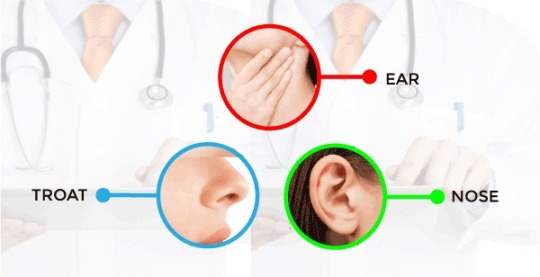
2. ENT Devices Market: Orchestrating Comprehensive Care:-
The global ENT Devices Market boasts a hefty valuation of US$23.5 billion in 2023, projected to reach a staggering US$38.9 billion by 2028. This translates to a CAGR of 7.4%, a testament to the growing demand for advanced solutions to address a diverse range of ENT issues. Several key factors fuel this growth:
Rising Prevalence of ENT Disorders: Allergies, sinusitis, hearing loss, and throat infections are on the rise due to factors like pollution, aging populations, and increased awareness.
Technological Advancements: Minimally invasive endoscopic tools, image-guided surgery systems, and sophisticated diagnostic equipment are revolutionizing ENT care.
Focus on Early Diagnosis and Personalized Treatments: Early detection and targeted treatment plans improve outcomes and reduce healthcare costs.
Growing Demand for Aesthetics: Procedures like rhinoplasty and otoplasty are gaining traction, further propelling market growth.
3. ENT Disorder Treatment Market: Precision in Therapeutic Solutions:-
The ENT Disorder Treatment Market is a dedicated segment within ENT healthcare, focusing on therapeutic interventions for a range of disorders. From pharmaceuticals and surgical procedures to innovative non-invasive treatments, this market segment addresses the diverse needs of patients with ENT conditions. The Global ENT Treatment Market accounted for USD 21,061 million in 2021. It is anticipated to reach USD 33,520 million by 2030 with a CAGR of 5.2% from 2022 to 2030. The market is driven by the rising incidence of ENT disorders such as hearing loss, sinusitis, and sleep apnea.
4. ENT and Bronchoscopy Devices Market: Bridging Respiratory and ENT Care:-
The intersection of ENT and Bronchoscopy Devices creates a synergy between respiratory and ENT healthcare. Bronchoscopy devices, traditionally associated with pulmonary care, are increasingly utilized to address conditions affecting the upper airways, reinforcing the collaborative nature of medical specialties. Bronchoscopy Market size was valued at USD 2.8 billion in 2022 and is estimated to account for USD 6 billion by 2032. Bronchoscopy is the most common interventional pulmonology technique performed using a bronchoscope. It can be carried out using either single-use or reusable bronchoscopes.
Market Dynamics and Future Trends:-
The ENT Devices Market is characterized by a dynamic interplay of technological innovation, patient-centric care, and interdisciplinary collaborations. Future trends may include the integration of artificial intelligence for diagnostic support, the development of minimally invasive treatment options, and the expansion of telehealth solutions for remote patient monitoring.
Challenges and Opportunities:-
Challenges within the ENT Devices Industry encompass the need for continuous technological upgrades, ensuring accessibility to advanced devices in diverse healthcare settings, and addressing regulatory considerations. Opportunities lie in fostering collaborations between ENT specialists and pulmonologists, expanding the market reach in emerging economies, and refining patient-centric solutions.
Conclusion:-
In conclusion, the ENT Devices Market emerges as a beacon of innovation and precision in healthcare, addressing the intricate and interconnected aspects of ear, nose, and throat disorders. From diagnostic clarity with Endoscopy Devices to therapeutic versatility in the ENT Disorder Treatment Market, this sector plays a vital role in enhancing patient outcomes and quality of life. As technological advancements continue to shape the landscape, the ENT Devices Market remains at the forefront of providing comprehensive and compassionate care for individuals experiencing ENT health challenges.
0 notes
Text
Innovating Orthopedic Healing: Bone Growth Stimulators Unveiled
The Bone Growth Stimulators Industry, a pivotal segment in orthopedic care, is witnessing transformative strides, with a focus on market size, electrical bone growth stimulators, and the key players shaping this dynamic industry. As technology merges with orthopedic innovation, the market emerges as a beacon for enhanced healing and improved patient outcomes.
1. Bone Growth Stimulators Market Size: Paving the Way for Progress:-
The global Bone Growth Stimulators Market boasts a respectable valuation of US$1.4 billion in 2023, projected to reach a staggering US$1.9 billion by 2027. This translates to a CAGR of 5.9%, indicating a steady and sustained growth fueled by several factors:
Rising Prevalence of Bone Fractures: An aging population coupled with active lifestyles leads to an increased incidence of bone fractures, creating a larger demand for bone healing solutions.
Advancements in Medical Technology: Improved efficiency, portability, and user-friendliness of bone growth stimulators make them a more attractive option for patients and healthcare professionals.
Expanding Applications: Applications are moving beyond fracture healing, targeting delayed unions, non-unions, spinal fusion surgeries, and even osteoporosis management, broadening the market potential.
Focus on Minimally Invasive Approaches: Bone growth stimulators offer a non-surgical alternative to traditional treatments, appealing to patients and reducing healthcare costs.
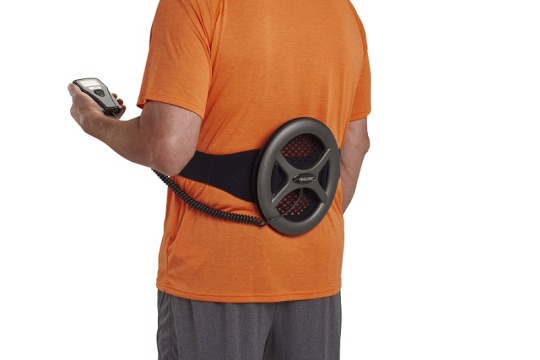
2. Electrical Bone Growth Stimulators Market: A Shock to Healing Efficiency:-
Overview:-
Within the broader Bone Growth Stimulators Market, electrical bone growth stimulators represent a pioneering approach to accelerate bone healing. These devices utilize electrical impulses to stimulate the bone's natural healing process, fostering quicker recovery and reducing the risk of complications.
Technological Advancements:-
The electrical bone growth stimulators segment experiences continuous technological advancements, with devices becoming more compact, user-friendly, and featuring enhanced programmability. As these innovations elevate treatment efficacy, patients benefit from shorter recovery times and improved postoperative outcomes.
3. Top Bone Growth Stimulator Market Players: Leaders Shaping Orthopedic Solutions:-
Key players in the Bone Growth Stimulators Market play a pivotal role in driving innovation and influencing industry dynamics. Companies such as Medtronic, Zimmer Biomet, and Orthofix International are at the forefront, contributing to the development of cutting-edge devices and setting industry standards.
Medtronic:- As a global leader, Medtronic's bone growth stimulators portfolio encompasses a range of advanced devices, offering clinicians and patients innovative solutions for musculoskeletal conditions. Their commitment to research and development solidifies their position in shaping the market.
Zimmer Biomet:- Zimmer Biomet, with a comprehensive orthopedic product line, including bone growth stimulators, contributes significantly to the market's evolution. Their emphasis on biomechanics and patient-centric solutions positions them as a key player in advancing orthopedic care.
Orthofix International:- Orthofix International specializes in orthopedic medical devices, prominently featuring bone growth stimulators. Their dedication to providing effective and patient-friendly solutions underscores their influence in the Bone Growth Stimulators Market.
Market Dynamics and Future Trends:-
The Bone Growth Stimulators Market, characterized by a dynamic interplay of technological innovation and medical expertise, anticipates future trends that will shape the landscape. Continuous research into the biological mechanisms of bone healing, personalized treatment approaches, and the integration of artificial intelligence are poised to define the market's trajectory.
Challenges and Opportunities:-
Challenges within the Bone Growth Stimulators Market include navigating regulatory pathways, ensuring affordability and accessibility, and addressing patient compliance issues. Opportunities for growth lie in expanding indications for use, exploring emerging markets, and fostering collaborations between industry players and healthcare professionals.
Conclusion:-
In conclusion, the Bone Growth Stimulators Market stands at the intersection of medical science and technological innovation, offering transformative solutions for orthopedic healing. With a burgeoning market size, the advent of electrical bone growth stimulators, and the influence of top players, this market continues to redefine the landscape of orthopedic care. As advancements propel the industry forward, patients and healthcare professionals alike can anticipate a future where bone healing is not just a biological process but a carefully orchestrated symphony of science and innovation.
0 notes
Text
Revolutionizing Healthcare: Navigating the Dynamics of the Medical Device Market
The Medical Device Market stands at the forefront of transformative innovations, shaping the landscape of healthcare delivery globally. This exploration delves into key segments within the market, namely Wearable Medical Devices, Home Medical Devices, Hi-tech Medical Devices, and Smart Medical Devices, unveiling insights into their revenue, growth trajectories, and market sizes. This market boasts a colossal valuation of US$546.3 billion in 2023, projected to reach a staggering US$800.7 billion by 2028.
1. Wearable Medical Devices Market:-
Overview: The Wearable Medical Devices Market represents a paradigm shift in healthcare, merging technology with patient care. Wearables include devices like smartwatches, fitness trackers, and continuous glucose monitors designed to monitor, track, and manage various health parameters.
Market Size: As of recent assessments, the Wearable Medical Devices Market is poised for continuous expansion, with a broadening consumer base embracing wearable technologies for personalized health insights. The market's size is indicative of its increasing relevance in the healthcare ecosystem. The Wearable Medical Devices Market size is estimated at USD 41.75 billion in 2024, and is expected to reach USD 86.20 billion by 2029, growing at a CAGR of 15.60% during the forecast period (2024-2029).
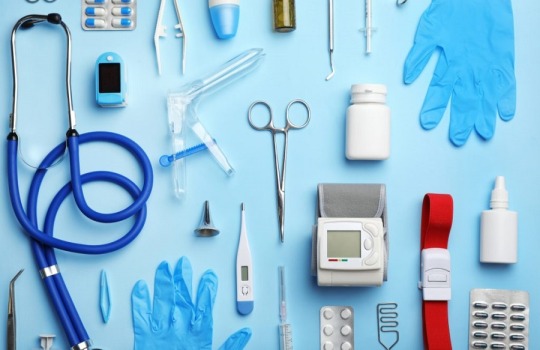
2. Home Medical Devices Market:-
Overview: The Home Medical Devices Market caters to the evolving trend of shifting healthcare services from traditional settings to the comfort of patients' homes. Devices in this segment include blood pressure monitors, oxygen concentrators, and portable diagnostic tools.
Market Size: The Home Medical Devices Market, characterized by its diversity of products, showcases a considerable market size. As more individuals seek the convenience and cost-effectiveness of managing their health at home, the market's size continues to expand. Global Home Medical Equipment market size was valued at USD 37048.73 million in 2022 and is expected to expand at a CAGR of 7.17% during the forecast period, reaching USD 56119.23 million by 2028.
3. Hi-tech Medical Devices Market:-
Overview: The Hi-tech Medical Devices Market encapsulates cutting-edge technologies and sophisticated medical equipment designed for diagnostic, therapeutic, and surgical applications. This includes advanced imaging systems, robotic surgical tools, and precision medical instruments.
Market Size: As a critical component of modern healthcare, the Hi-tech Medical Devices Market boasts a substantial market size. The adoption of high-tech solutions in medical practices and the demand for state-of-the-art equipment contribute to the market's prominence. Hi-tech medical devices market which is USD 91.22 billion in 2022, is expected to reach USD 725.99 billion by 2030, at a CAGR of 29.6% during the forecast period 2023 to 2030.
4. Smart Medical Devices Market:-
Overview: The Smart Medical Devices Market converges intelligence with healthcare, encompassing devices with integrated connectivity and data analytics capabilities. Examples include smart inhalers, connected insulin pens, and remote patient monitoring systems.
Market Size: The Smart Medical Devices Market size is indicative of the escalating demand for connected healthcare solutions. With consumers and healthcare providers embracing smart technologies, the market continues to expand as an integral part of the broader medical device landscape. The global smart medical devices market was valued at $31.5 billion in 2021, and is projected to reach $132.1 billion by 2031, growing at a CAGR of 15.4% from 2022 to 2031.
Market Dynamics and Future Outlook:-
The Medical Device Market, characterized by the diverse segments explored, operates in a dynamic environment. The integration of technology, a focus on patient-centric solutions, and the continuous quest for innovation propel the market forward. As wearable, home-based, hi-tech, and smart devices converge, the future promises a seamlessly connected healthcare ecosystem.
Challenges and Opportunities:-
Challenges within the Medical Device Market include navigating regulatory frameworks, ensuring data security in connected devices, and addressing disparities in access to advanced medical technologies. Opportunities for growth lie in fostering collaborations between technology developers and healthcare professionals, driving affordability, and advancing patient-centric solutions.
Conclusion:-
In conclusion, the Medical Device Market unfolds as a catalyst for transformative change in healthcare. From the wearable technologies monitoring daily health metrics to sophisticated hi-tech solutions and smart devices enhancing connectivity, each segment contributes to an integrated and patient-focused healthcare landscape. As the market continues to evolve, driven by innovation and a commitment to improving patient outcomes, it remains a beacon of progress in the journey towards a more connected and technologically advanced future of healthcare.
0 notes
Text
Navigating the Consumables Market: A Comprehensive Exploration of Size, Dynamics, and Growth
The Consumables Market, a vast and dynamic sector, encapsulates a diverse array of products that individuals and businesses consume on a daily basis. From essential household items to office supplies and beyond, this market is a fundamental part of everyday life. This exploration delves into the market's size, dynamics, and the trajectory of revenue growth.
Overview of the Consumables Market:-
The Consumables Market is a broad category encompassing a range of products that are used and replenished regularly. This includes items such as food and beverages, personal care products, office supplies, cleaning materials, and other essentials that form the backbone of daily living and operational needs for businesses.
A Bite of the Big Picture:-
Just how big is this culinary colossus? The global Consumables Market is estimated to be a staggering US$10.6 trillion in 2023, projected to reach a mouth watering US$14.3 trillion by 2028. That translates to a healthy CAGR of 3.2%, indicating a steady growth trajectory over the next few years.

Regional Flavors:-
Just like every dish boasts its own unique blend of spices, the Consumables Market takes on different flavors across the globe:
Asia-Pacific:- The largest consumer, driven by high population density and rising incomes.
North America:- A focus on convenience, premiumization, and health-conscious options.
Europe:- A mature market, emphasizing sustainability and local sourcing.
Latin America:- A rapidly growing market, with a preference for regional flavors and traditional ingredients.
Key Components of the Consumables Market:-
Food and Beverages:- The food and beverage segment is a cornerstone of the Consumables Market. It includes everything from fresh produce and packaged goods to beverages, catering to the essential needs of consumers.
Personal Care Products:- Personal care items, including toiletries, hygiene products, and cosmetics, form another crucial component. This segment caters to individual health and well-being, driving regular consumption.
Office and Stationery Supplies:- The market extends to office and stationery supplies, encompassing items like paper, ink, pens, and other essentials necessary for day-to-day business operations.
Cleaning and Household Products:- Cleaning materials, detergents, and other household products contribute significantly to the Consumables Market. Regular usage and replenishment characterize this segment.
Healthcare and Medical Consumables:- Healthcare and medical consumables, including over-the-counter medications, first aid supplies, and related items, play a vital role in the market's diverse landscape.
Factors Influencing Growth:-
Population Growth:- As global populations continue to grow, the demand for consumable products rises proportionally, contributing to the market's expansion.
Economic Stability:- Economic stability plays a crucial role in influencing consumer spending on consumables. Stable economies often correlate with increased consumer confidence and higher purchasing power.
Innovation and Trends:- Innovations in product offerings, coupled with changing consumer trends, contribute to the growth of the Consumables Market. Companies that adapt to evolving preferences often find success in this dynamic market.
E-commerce and Convenience:- The rise of e-commerce has significantly impacted the Consumables Market. Online platforms provide convenient access to a wide range of consumable products, influencing consumer purchasing behaviors.
Challenges and Opportunities:-
While the Consumables Market presents lucrative opportunities, it also faces challenges such as market saturation, intense competition, and the need for sustainable practices. Opportunities lie in product innovation, the adoption of eco-friendly practices, and catering to the evolving needs of conscious consumers.
Conclusion:-
The Consumables Market, a tapestry of essential products, plays an integral role in the daily lives of individuals and the operational dynamics of businesses. As the market continues to evolve with changing consumer behaviors and technological advancements, businesses within this sector navigate the delicate balance between meeting essential needs and embracing innovation for sustained growth.
0 notes